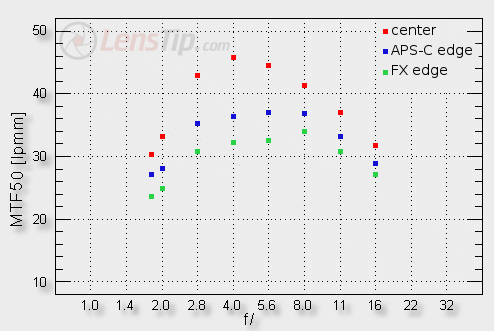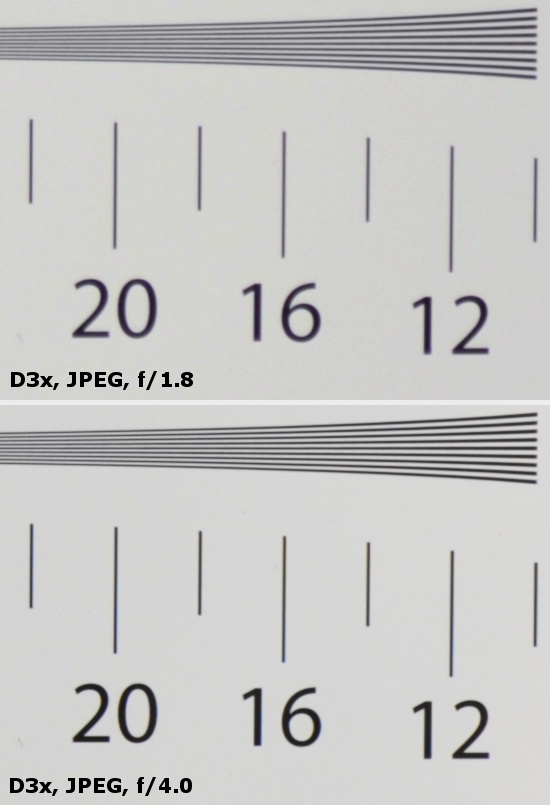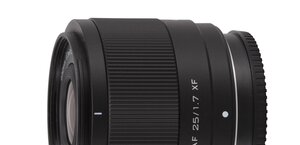Nikon Nikkor AF-S 35 mm f/1.8G ED
4. Image resolution
Let’s check how the Nikkor’s 1.8/35G ED results compare here. Its performance in the frame centre, on the edge of the APS-C/DX sensor and on the edge of full frame are presented on the graph below.

Please Support UsIf you enjoy our reviews and articles, and you want us to continue our work please, support our website by donating through PayPal. The funds are going to be used for paying our editorial team, renting servers, and equipping our testing studio; only that way we will be able to continue providing you interesting content for free. |
- - - - - - - - - - - - - - - - - - - - - - - - - - - - - - - - - - - - - - - - - - - - - - - -
The good news is easy to spot. In the frame centre, even at the maximum relative aperture, the lens exceeds slightly 30 lpmm so is able to generate useful images. It is a big advantage. Then, on stopping down, the MTFs improve sharply and the peak of its possibilities, amounting to about 46 lpmm, the lens is able to reach by f/4.0-5.6. These are not record values but still such a level is good, comparable to the performance of a more expensive, faster Nikkor 1.4/35G.
However if you compare the Nikkor to its direct rivals those achievements aren’t impressive any longer. The Canon 2/35 IS at the maximum relative aperture is well above the decency level and on stopping down gets results as high as it befits the best ‘prime’. The same can be said about the Sigma 1.4/35 which even by f/1.4 is fully useful and after stopping down can brush against record values.
Even more reservations you can have while looking at the edge of the frame. Already in the case of the APS-C sensor and by f/1.8/2.0 image is not useful. The Canon 2/35 IS, even though it was slower, didn’t experience such problems. The Sigma could be useful even by f/1.4.
When it comes to the edge of full frame the Nikkor 1.8/35 must be closed down to f/2.8 in order to present a decent image quality. The maximum results are average, reaching about 33 lpmm. Still the performance is better than that of the Nikkor 1.4/35G but it remains worse than that of the Sigma. In the duel with the Canon the Nikkor finally can score some points here. The Canon was very weak by f/2.0 and f/2.8 so it had to be stopped down to f/4.0 in order to generate useful images on the edge of full frame.
To sum up our impressions are mixed. The frame centre is beyond reproach and the new lens still fares better than the more expensive Nikkor 1.4/35G. Unfortunately for Nikon the rivals proved beyond any doubt that you can manufacture far better 35 mm devices.
 |






